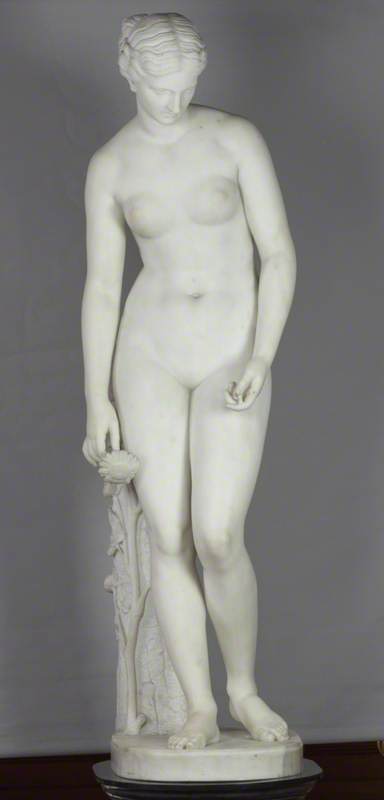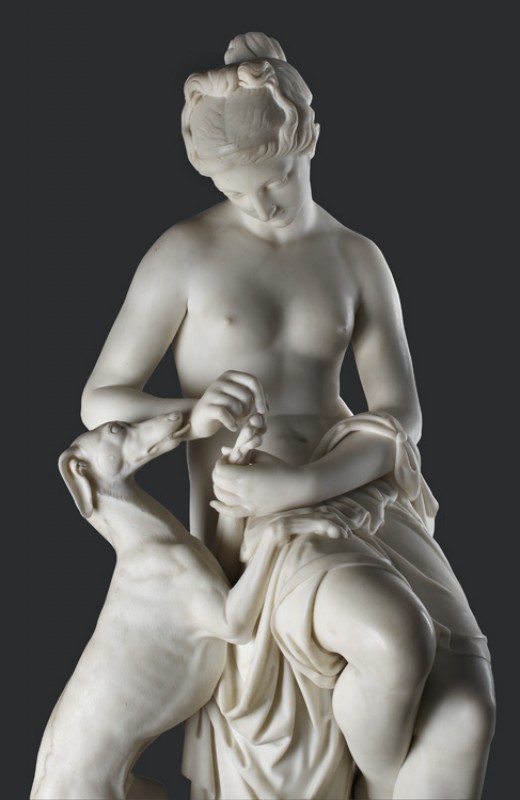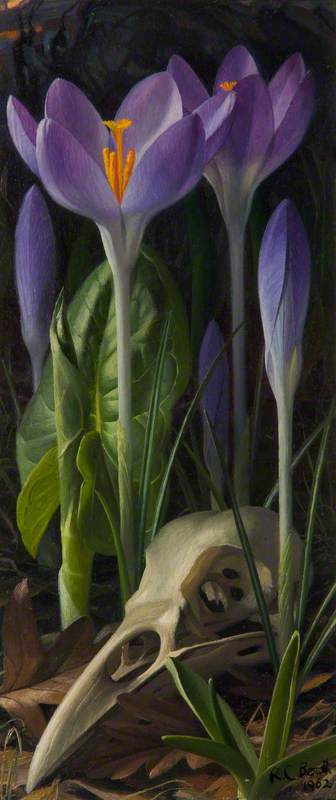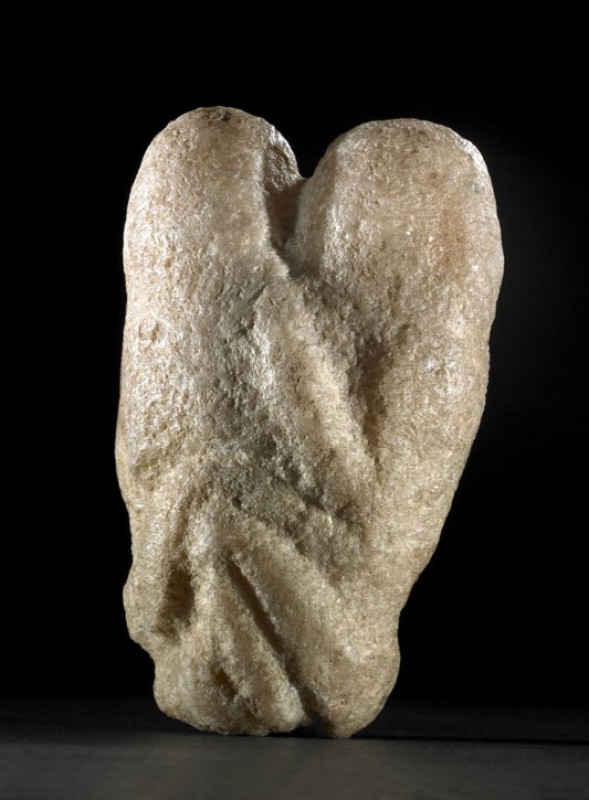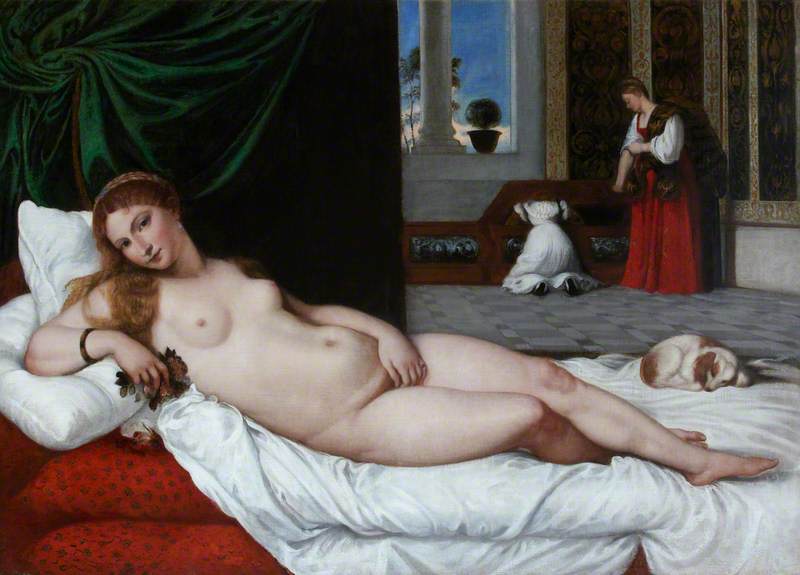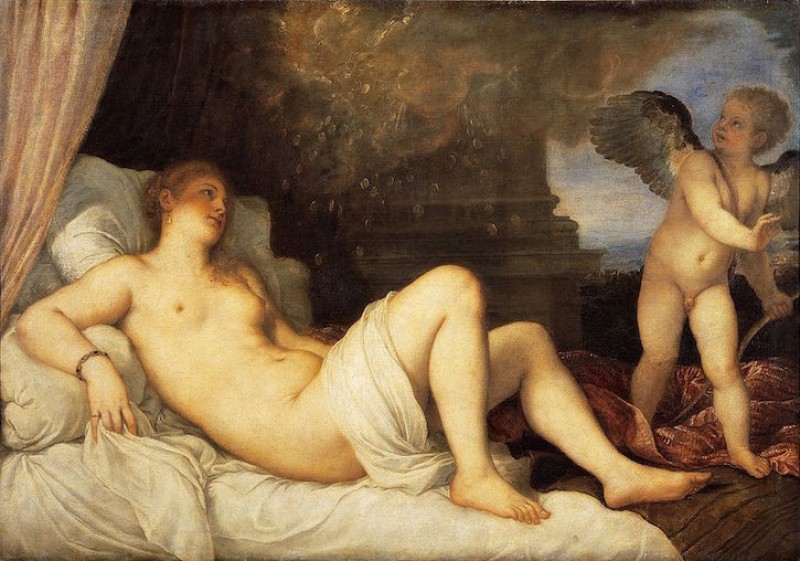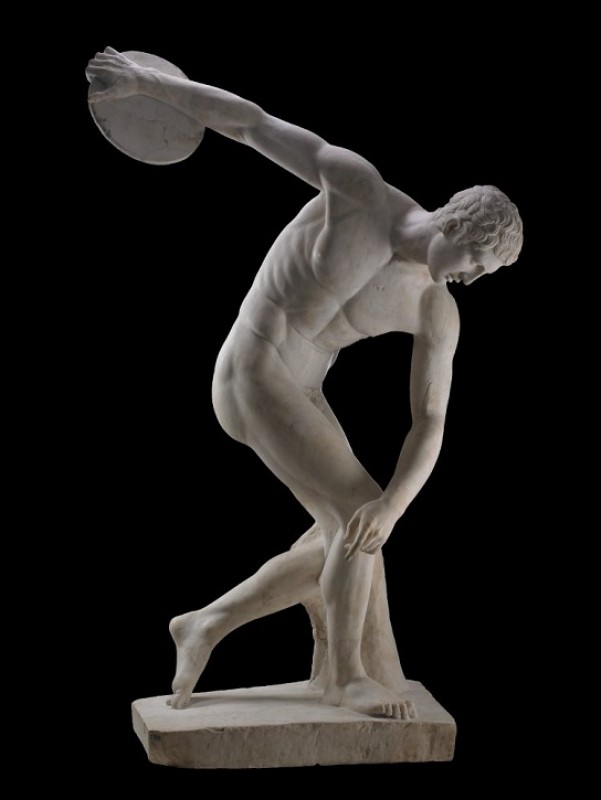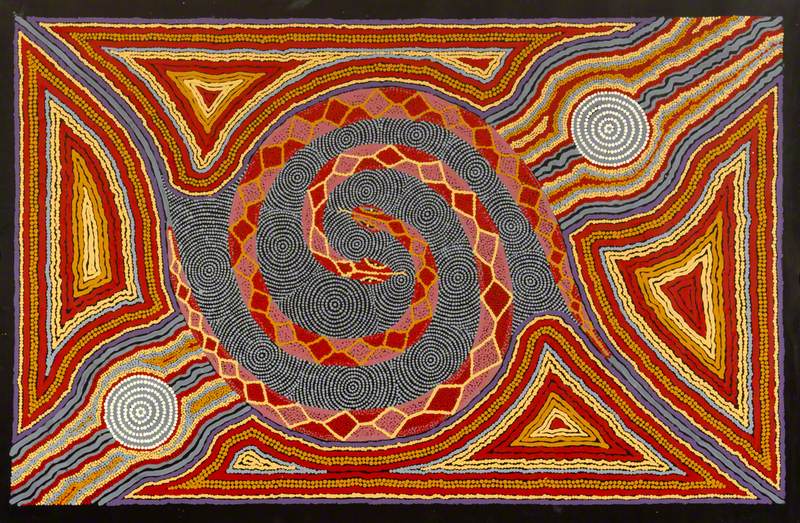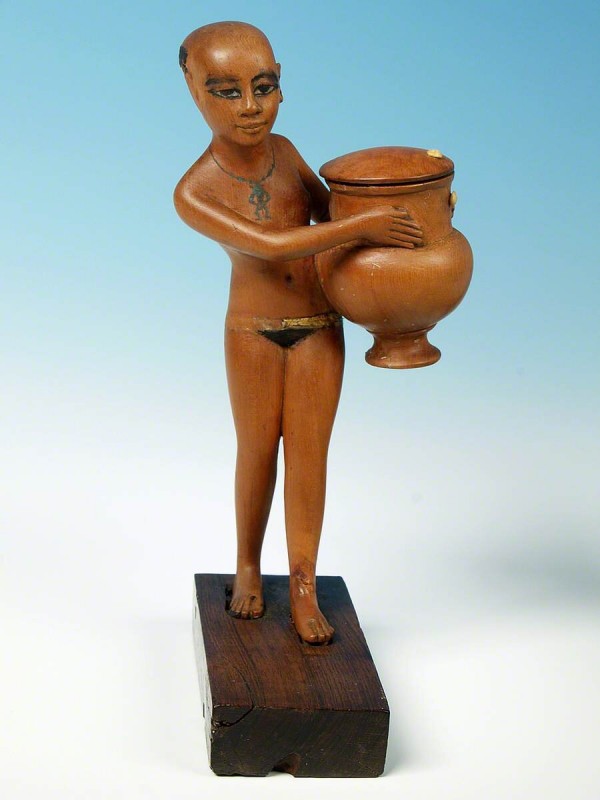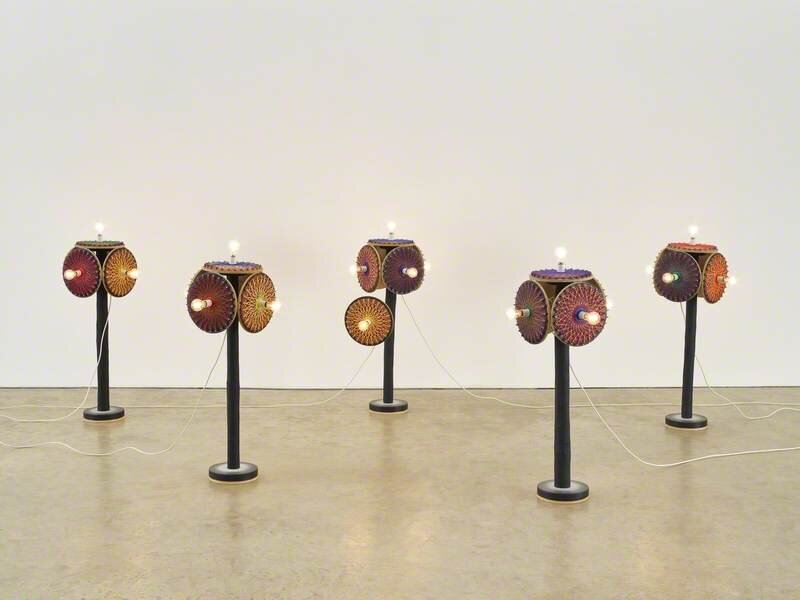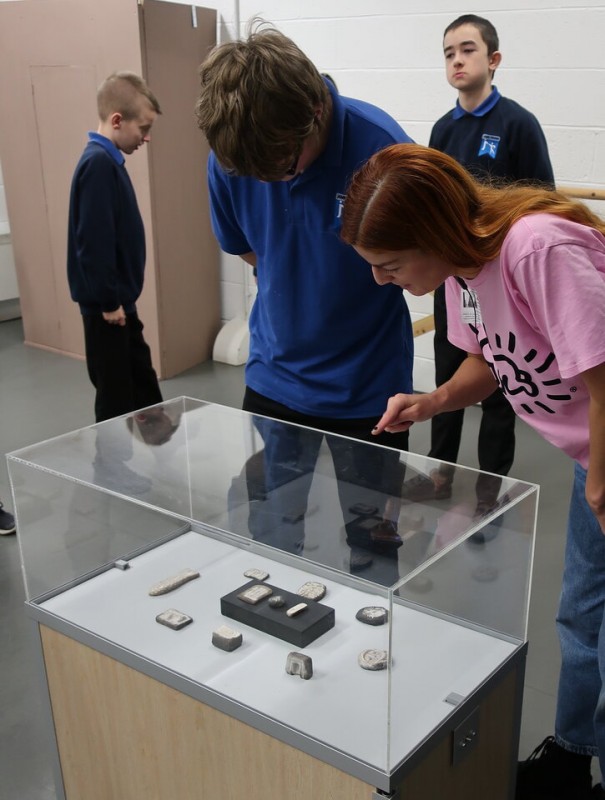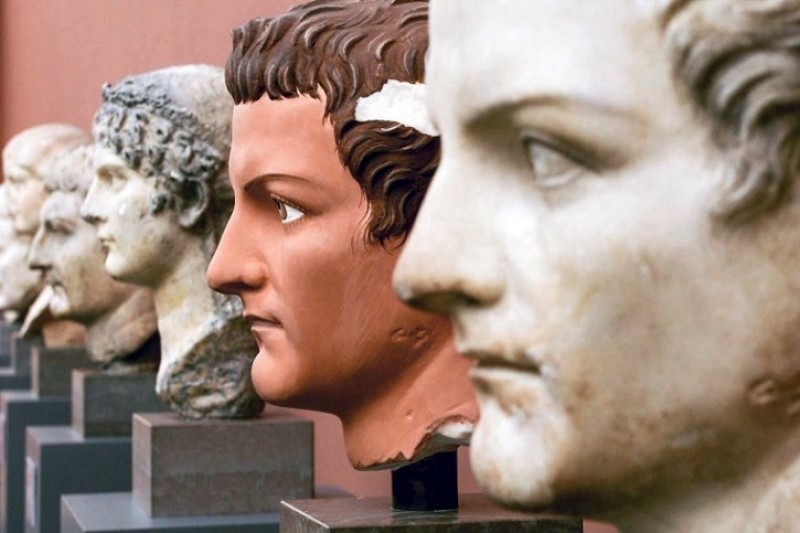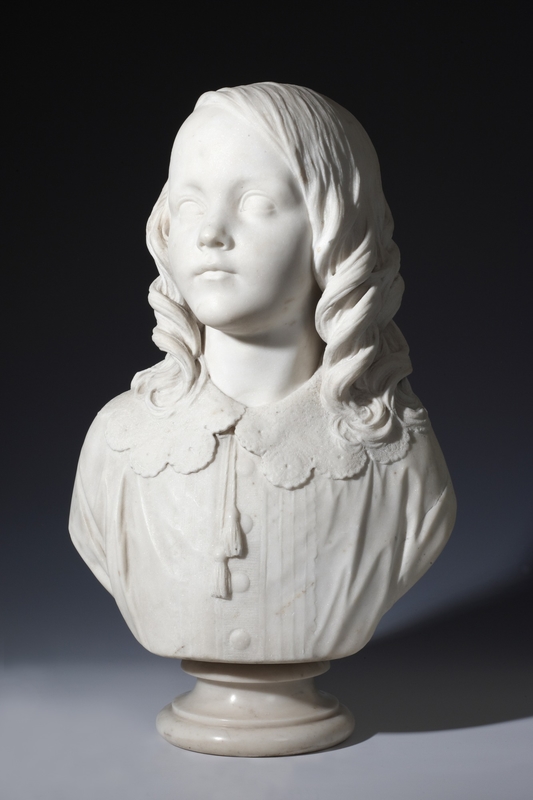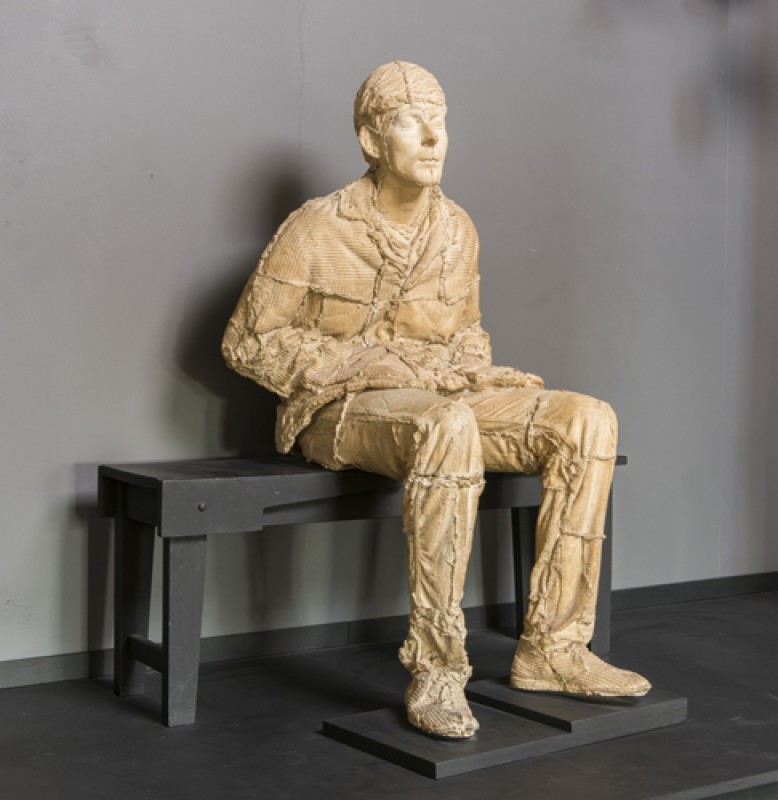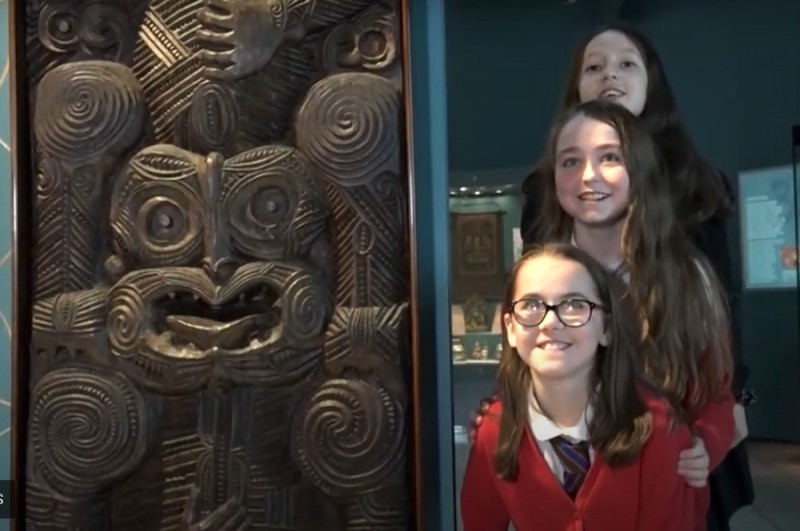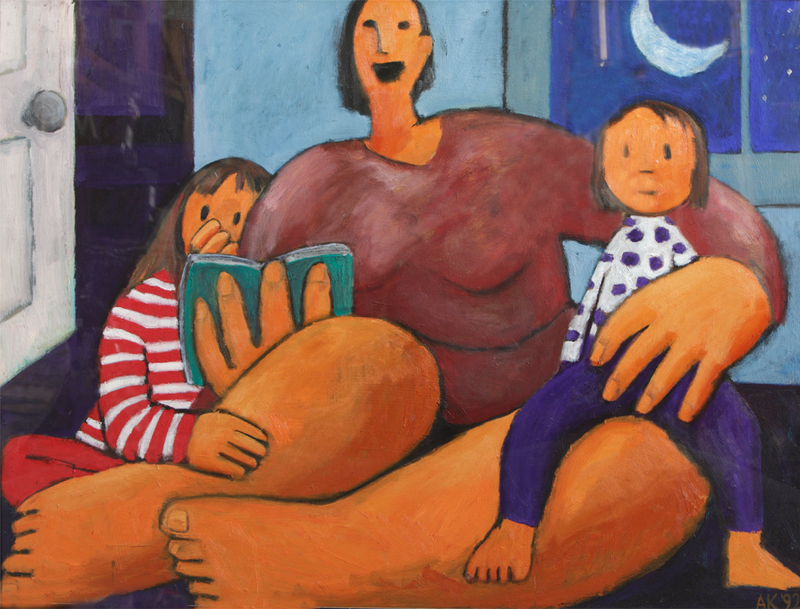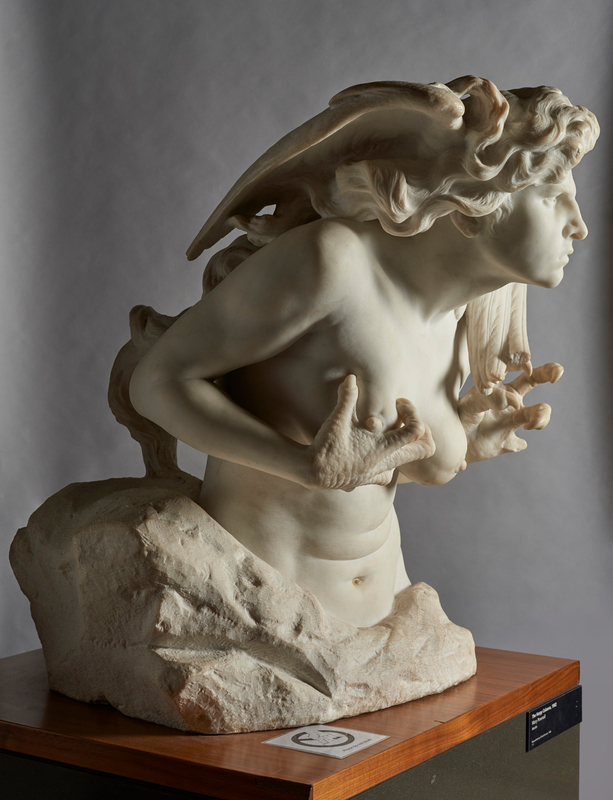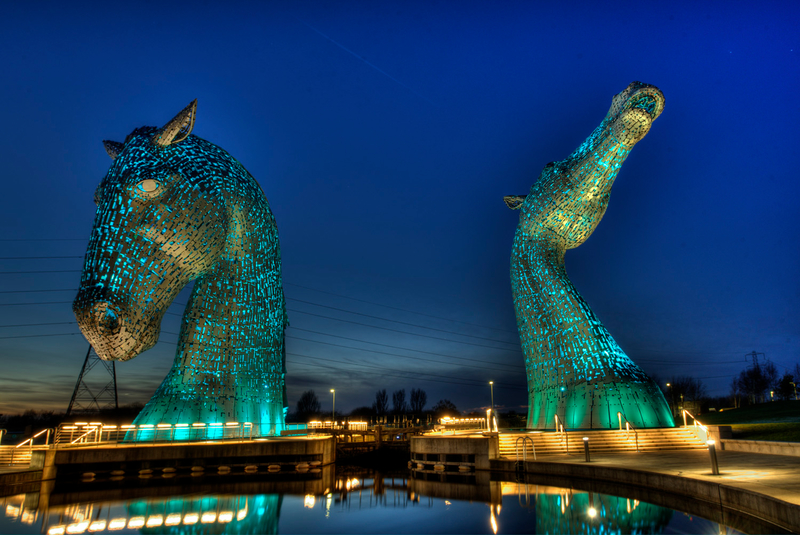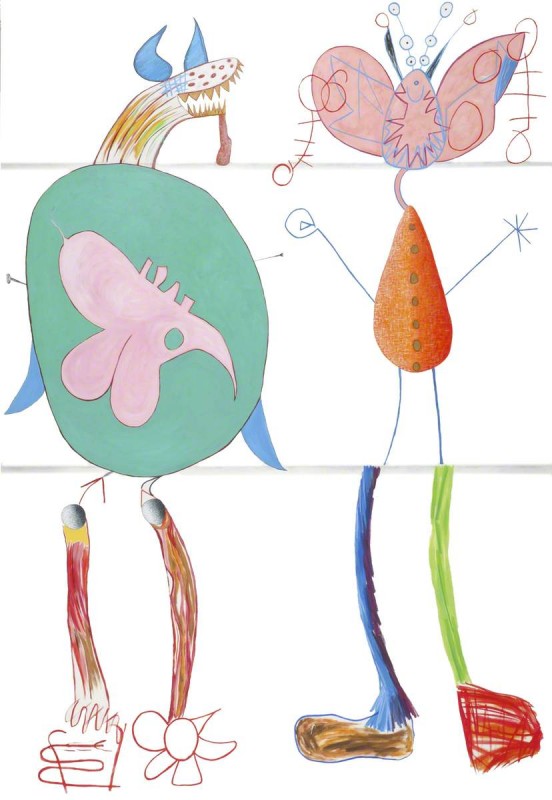'Clytie'
This four-minute audio clip describes the sculpture Clytie by William Henry Rinehart (1825–1874).
Full audio description text
The naked figure of a young water nymph, Clytie, stands on a shallow, oval-shaped pedestal. The sculpture is carved in white marble, the luminescent qualities of which give the figure an ethereal presence. Both figure and pedestal are mounted on a black marble plinth, which is 70 cm high, and made especially for the work. The sculpture was created by William Henry Rinehart in 1874.
Clytie rests some of her weight on a tall tree stump behind her that meets the height of her hips. The tree stump is decoratively carved with thick bark, around which a leafy sunflower plant is depicted in various stages of growth from bud to full bloom. The figure's right leg leans against the stump and the left leg is bent slightly at the knee. She leans forward from the neck, looking down towards the floor of the Picture Gallery at Hospitalfield where she is displayed. Her long, curly hair is centre-parted and tied up loosely at the back. The head appears small in proportion to the body, which is about 120 cm in height.
Clytie was a name given to several figures in Greek mythology. The Roman poet Ovid tells the story of the most well-known Clytie in Metamorphoses. An Oceanid or water nymph, Clytie was the lover of the sun god Helios, but he deserted her to pursue Leucothea, daughter of Orchamus. Enraged, Clytie told Orchamus about the love affair, who then sentenced his daughter to death by burying her alive.
Clytie thought the death of Leucothea would make Helios return to her, but it only repelled him further. Clytie lay across rocks, naked, for nine days, without eating or drinking, simply staring at the sun. Helios never reciprocated. At last her feet took root in the loose sand, her garments became green leaves and her face formed as a sunflower, turning slowly on its stem, always facing towards the sun.
In this sculpture, Rinehart subtly evokes Ovid's story by depicting a languid sunflower in Clytie's right hand. The flower is living and still attached to the tall stem of the plant, though Clytie holds the weight of the large bloom in her hand. The tree stump with vivid sunflower plants serves both to enhance the narrative and to offer support for the marble figure.
William Henry Rinehart was an American sculptor working in Rome in the Neoclassical style. American Neoclassical artists of this period were frequently inspired by Greek mythology for their subjects. Rinehart's sculpture of Clytie is part of the permanent display at Hospitalfield and plays a dominant role within the Picture Gallery – a room full of elaborate carvings in wood and masonry, with walls adorned with dozens of paintings. Hospitalfield has an early photograph of the Gallery dating from 1894 showing the sculpture in a very similar position to its current location.
Clytie's elegant form, radiant with the natural light that fills the room from its tall windows, remains fixed in the memory long after leaving the Picture Gallery.
Art UK and VocalEyes
This audio description was created by VocalEyes for Art UK Sculpture, a national project to document and increase access to the UK's publicly owned sculpture. This description is one of 25 representing sculpture collections across the UK.
